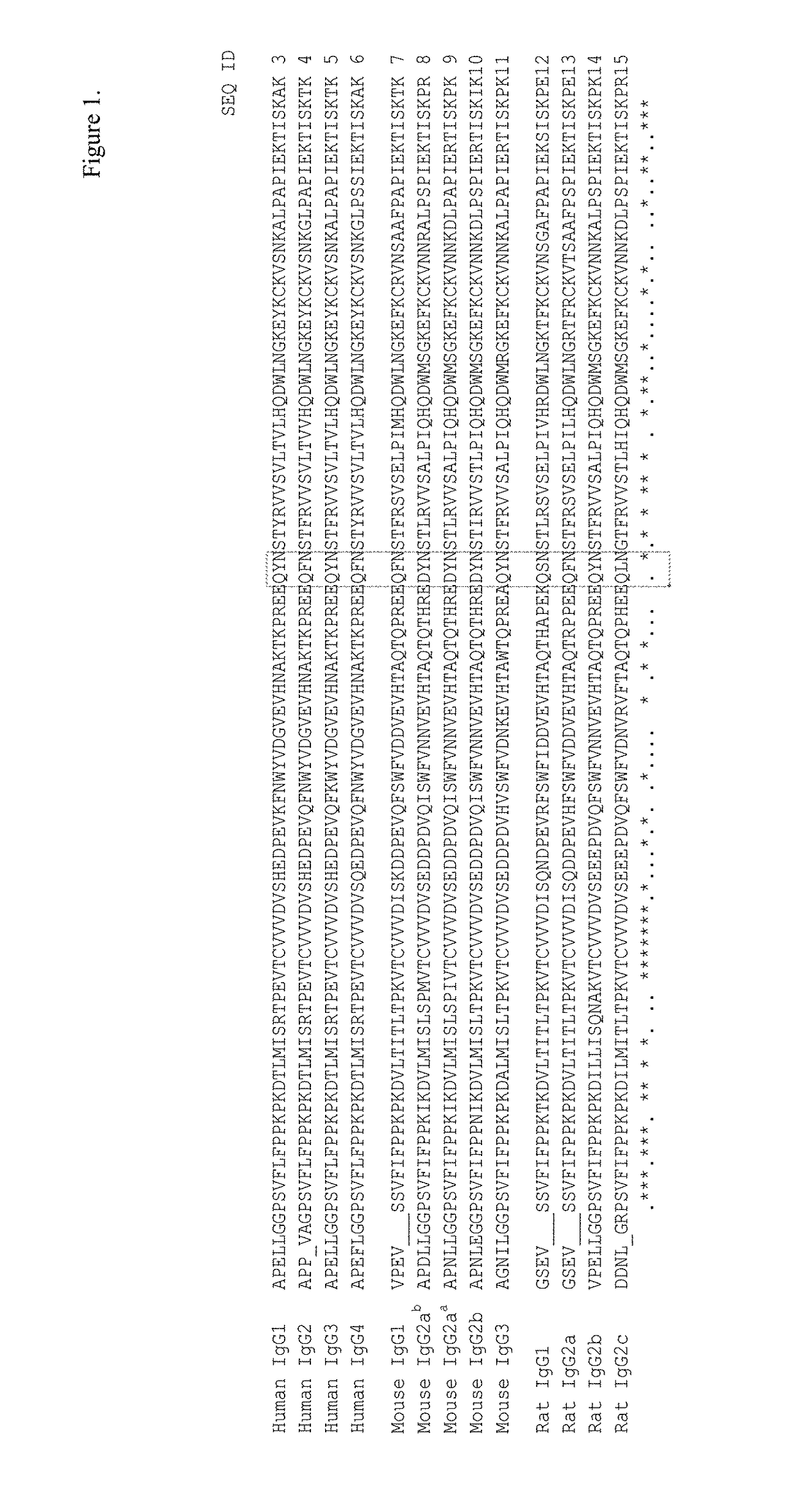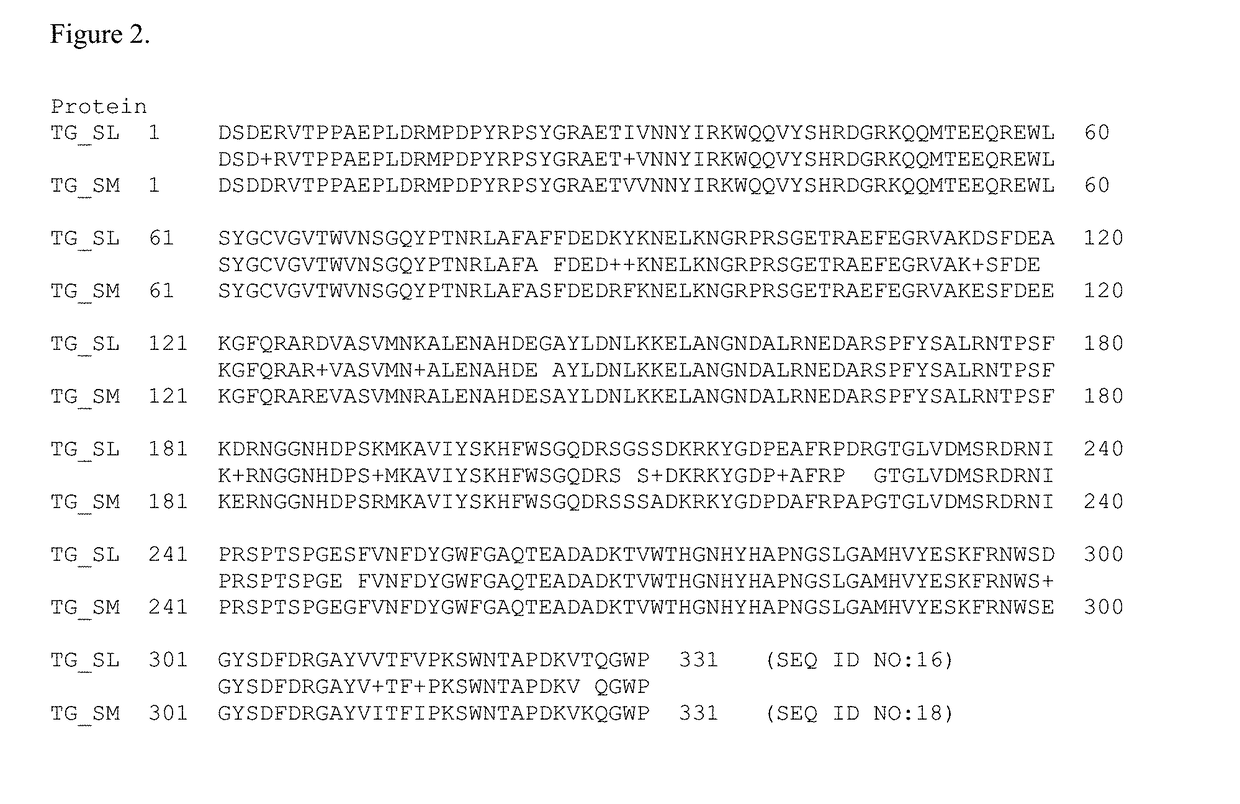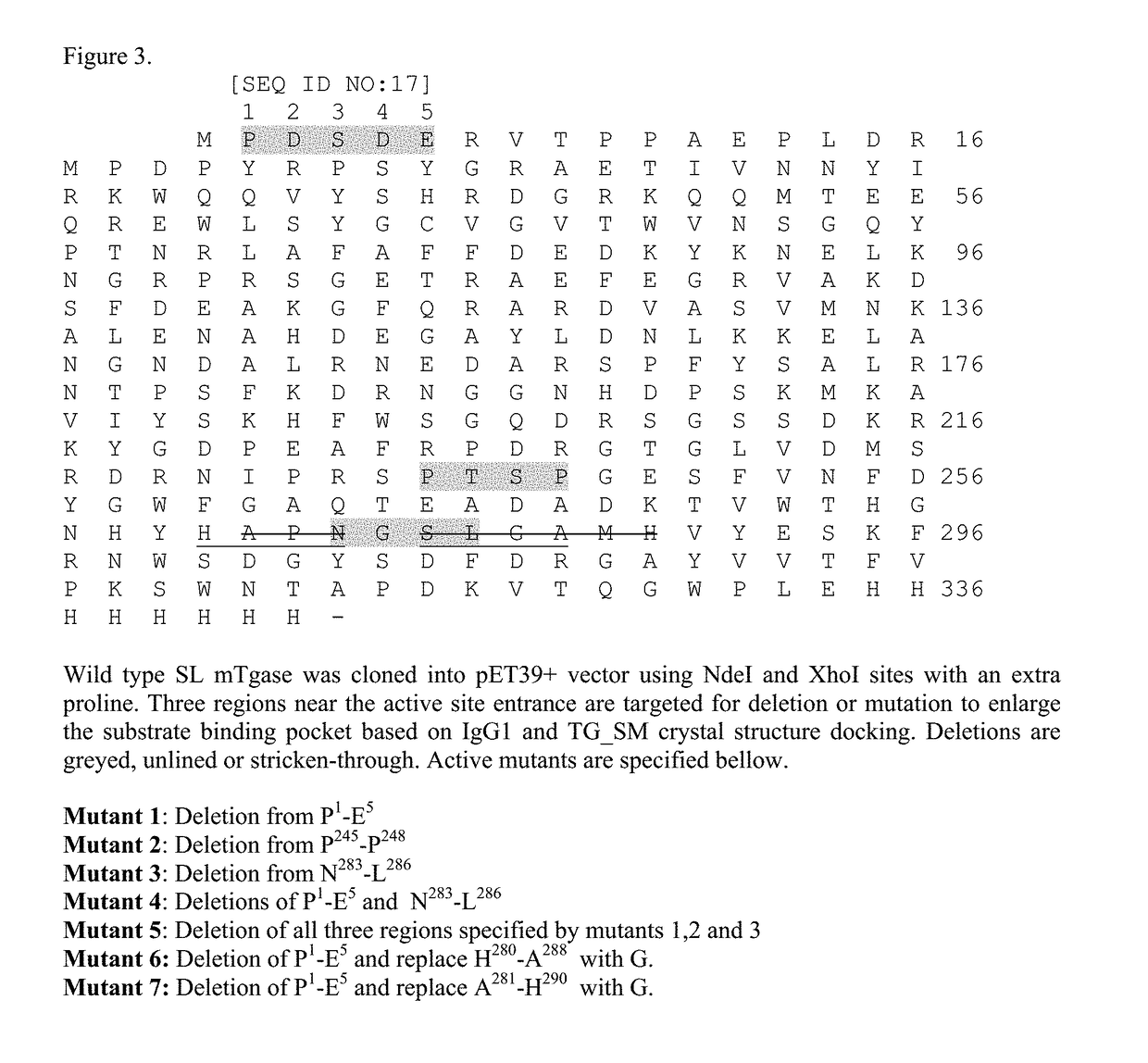Homogenous antibody drug conjugates via enzymatic methods
a technology of homologous antibody and conjugate, which is applied in the direction of transferases, peptide/protein ingredients, peptide sources, etc., can solve the problems of long reaction procedures, low antibody expression yield, and complex reaction procedures of heterologous mixture of conjugates, so as to improve the pharmacokinetic property of antibody composition
- Summary
- Abstract
- Description
- Claims
- Application Information
AI Technical Summary
Benefits of technology
Problems solved by technology
Method used
Image
Examples
example 1
n of TGase Mutants
[0195]This example describes the generation of TGase mutants. With reference to FIG. 3, three regions which near active site entrance were deleted or mutated to enlarge the substrate binding pocket. Wild type TG_SL was cloned into pET39+ vector using NdeI and XhoI with an extra proline (SEQ ID NO:17). The following deletion mutants were made based on IgG1 and TG_SM docking: Mutant 1: Deletion from P1-E5 (SEQ ID NO:37); Mutant 2: Deletion from P245-P248 (SEQ ID NO:38); Mutant 3: Deletion from N283-L286 (SEQ ID NO:39); Mutant 4: Deletions of P1-E5 and N283-L286 (SEQ ID NO:40); Mutant 5: Deletion of all three regions specified by mutants 1, 2 and 3 (SEQ ID NO:41); Mutant 6: Deletion of P1-E5 and replace H280-A288 with G (SEQ ID NO:42); Mutant 7: Deletion of P1-E5 and replace A281-H290 with G (SEQ ID NO:43). Deletion area is greyed out, underlined or stricken-out as shown in FIG. 3. These mutants were more active toward IgG1.
[0196]Using DNA purified from S. ladakanum (...
example 2
on of IgG1 with Monodansylcadaverine (MDC) Catalyzed by mTgase
[0197]MDC was chosen for this experiment because it has a primary amine and its fluorescence can be easily monitored. MDC is used here to demonstrate its conjugation to mAB. To purified IgG1 (1-10 mg / ml) in Tris-buffer (pH 6.5-8.5), add MDC (Sigma-Aldrich) in DMSO to final concentrations of 1-5 mM (final DMSO 2-10%). Add purified wildtype TG_SL or its mutant to a final concentration of 0.05-1.0 mg / ml. Incubate the reaction mixtures at 37° C. Reaction was followed by HPLC using phenyl hydrophobic interaction column (PHIC, Tosoh Bioscience LLC). At the beginning of the reaction, the product was dominated by DAR1, where only one heavy chain of IgG1 was coupled with MDC. As the reaction progressed, DAR 2, where both heavy chains of IgG1 are coupled with MDC, became the major product. Toward the end of reaction (8 hours at 0.2 mg / ml of mTgase at pH 7), conjugation yield reached 80% for DAR2 with 20% of DAR 1 left, or 90% for h...
example 3
n of IgG1 with 1 kDa mPEG-NH2 by mTgase Catalysis
[0198]This experiment was carried out essentially as described in Example 2. The acyl acceptor MDC was replaced with 1 kDa methoxy-PEG-amine (JenKem, USA) in pH 7.0 to a final concentration of 1 to 2 mM, PEGylated IgG1 was obtained. Sample analysis of an overnight reaction at 37° C. on a C4 column after reduction with TCEP showed 90% modification of the heavy chains.
PUM
| Property | Measurement | Unit |
|---|---|---|
| concentration | aaaaa | aaaaa |
| molecular weight | aaaaa | aaaaa |
| molecular weight | aaaaa | aaaaa |
Abstract
Description
Claims
Application Information
 Login to View More
Login to View More - R&D
- Intellectual Property
- Life Sciences
- Materials
- Tech Scout
- Unparalleled Data Quality
- Higher Quality Content
- 60% Fewer Hallucinations
Browse by: Latest US Patents, China's latest patents, Technical Efficacy Thesaurus, Application Domain, Technology Topic, Popular Technical Reports.
© 2025 PatSnap. All rights reserved.Legal|Privacy policy|Modern Slavery Act Transparency Statement|Sitemap|About US| Contact US: help@patsnap.com



